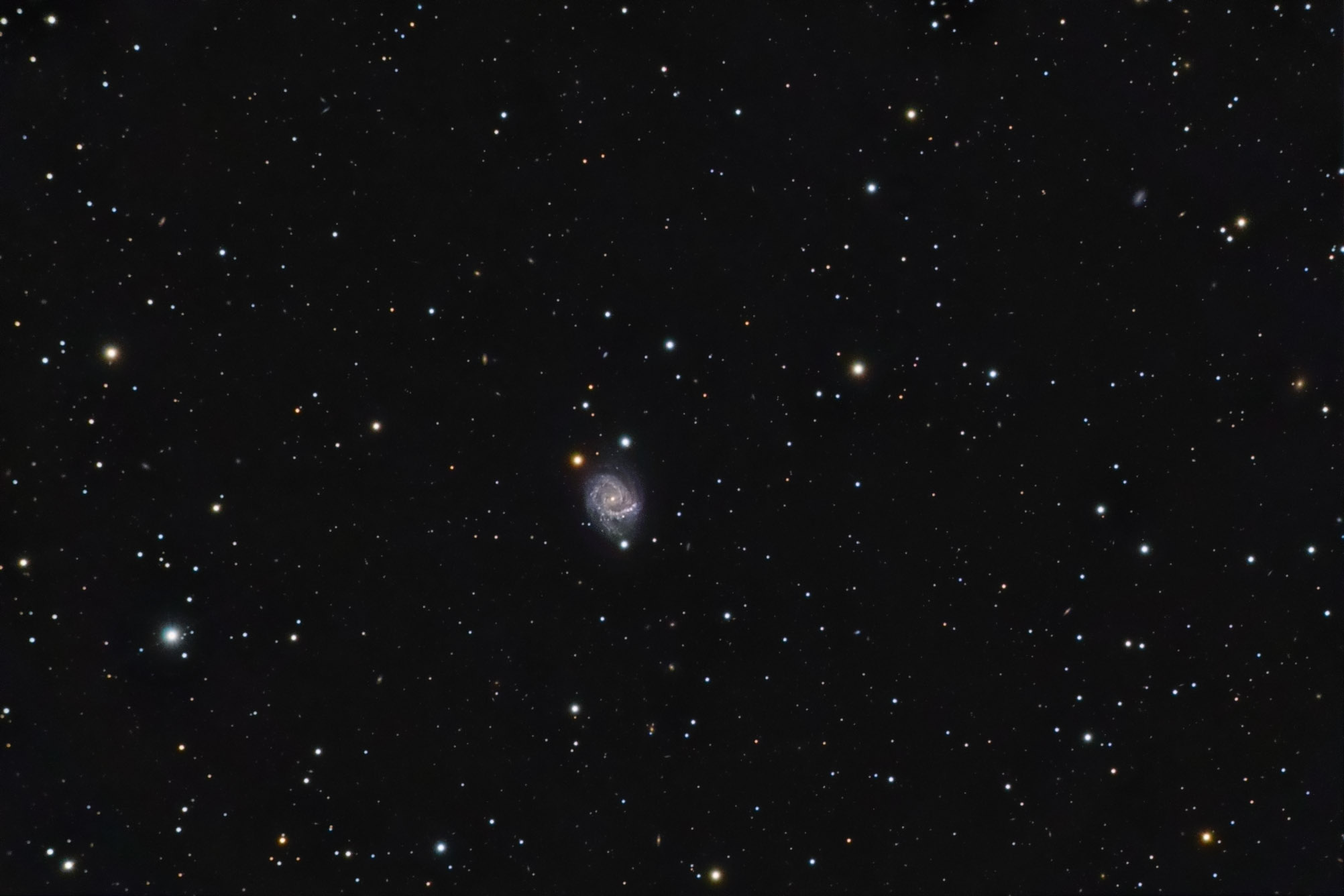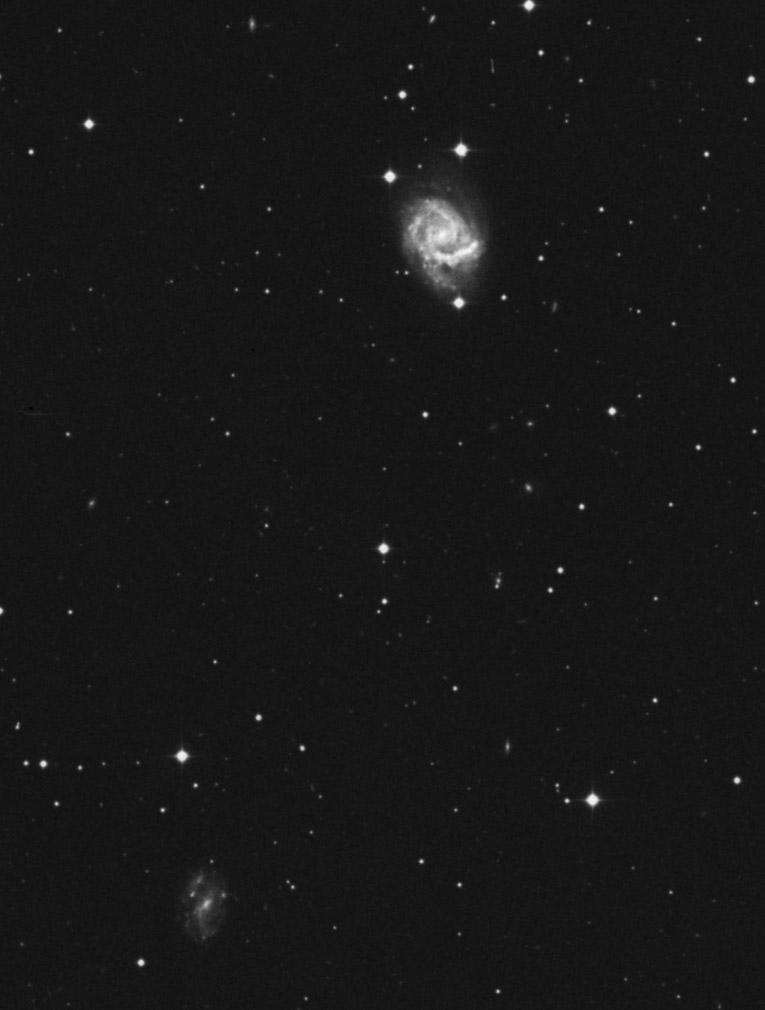| Description | Images |
Object name: ARP028Designation(s): ARP028, Arp 28 sits in a rather empty part of the sky. It is in Arp's class: Spiral Galaxies: One heavy arm. In some cases, I've had trouble seeing which arm Arp was talking about but this one is quite obvious for a change. Arp 28 is also known as NGC 7678 and is located near the center of the Great Square of Pegasus. It is classed as SAB(rs)c and is both a Seyfert 2 and starburst galaxy. It appears that heavy arm as a lot to do with the starburst classification. Arp's note: "Note straight heavy arm." The heavy arm is somewhat straight but so are other arm segments of the galaxy. It certainly is a disturbed galaxy. Redshift puts it about 140 million light-years away. A single Sosies measurement shows a slightly closer distance of 115 million light years. I'm not sure such a measurement is all that accurate for a highly disturbed galaxy but then neither is redshift if the galaxy has had a close encounter that has accelerated it. The galaxy was discovered by William Herschel on September 15, 1784 but isn't in either of the Herschel 400 programs. Related Designation(s):2MASS J23282790+2225163, 2MASX J23282789+2225162, AKARI J2328275+222508, ARP 028, ARP028, CGCG 2326.0+2208, CGCG 476-045, IRAS 23259+2208, IRAS F23259+2208, KAZ 336, KUG 2325+221, LDCE 1578 NED004, LGG 474:[G93] 003, LQAC 352+022 001, MAPS-PP O_0843_0587630, MCG +04-55-017, NGC 7678, NSA 169266, PGC 071534, SDSS J232827.87+222516.4, UCM 2325+2208, UGC 12614, UZC J232827.9+222516, VV 359, [BTW2003] J2328+2234, [M98j] 259 NED03, [RHM2006] SFGs 075, [VCV2001] J232827.8+222517, [VCV2006] J232827.8+222517, |
Permanent link: https://images.mantrapskies.com/catalog/ARP-GALAXIES/ARP028/ARP28L410-L4X10RGB2X10X3-crop150.jpg |


